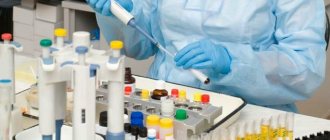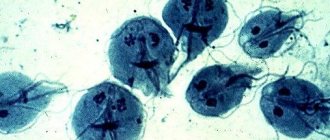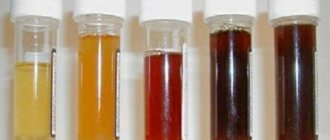In a refrigerator
Blood and urine for laboratory review cannot remain in a container or test tube for a long time. Human organic matter is a perishable product, so it is better to collect it right before delivering the container to the hospital. Since after some time biochemical reactions begin to occur in the container due to the breakdown of protein, salts, and oxidation. If you don’t think about how to store the collected urine before donating it, then after 120 minutes it will lose its original properties, so it can only be left for a long time in the refrigerator.
Material for general research should be kept in a refrigerator for no more than 24 hours.
To increase the shelf life, the temperature in the refrigerator compartment must be at least +4°C..
How long can biomaterial be stored for delivery, depending on the type of chemical test:
- General. It is necessary to collect in the morning, immediately after waking up, on an empty stomach. It is recommended to deliver to the laboratory within 60 minutes. The shelf life in this case is the shortest, so the effectiveness of this method is low;
- Chemical composition testing within 24 hours. Daily urine can be left in the cold, but the next day it must be taken to the clinic;
- For testing according to Nechiporenko, it is recommended to collect the first morning stream and give the container for study for an hour.
- Collection of organic matter for research according to Zimnitsky is carried out several times a day in sterile containers. They can be kept in the refrigerator for no more than a day from the moment the first sample is taken.
- To conduct a bacterial culture test, urine cannot be collected in advance and stored. This method involves transferring fresh organic matter to the laboratory, since many bacteria may die over time.
- For a pregnancy test, urine collected in the morning on an empty stomach is taken. Only the first portion contains the maximum concentration of the hCG hormone.
- To detect alcohol and drugs in urine, the method most often used is chemical toxicological testing (CTI), which does not imply long-term preservation of the liquid, since the period for detecting use is different for each person. It is not recommended to store it under any conditions.
Animal urine for analysis is allowed to be placed in the refrigerator for a short time, since collecting cat urine is very difficult and it is almost impossible to do this right outside the clinic doors. It is better to collect raw materials from a cat or dog for a clinical test at a veterinarian's appointment by puncturing the bladder immediately before testing. Most often this is done before surgery to determine the presence or absence of an inflammatory process in the body.
You can also leave stool in the refrigerator for some time for analysis. It is better to collect in the morning.
Rules for collecting and storing urine from children
What poses absolutely no difficulties for an adult is a serious undertaking for a child, especially if it is an infant. This also applies to collecting urine for laboratory testing, because it is not always possible for an infant to urinate in the morning from 7 to 9-10 o’clock (the time when the laboratory is open).
In this regard, many mothers have a question: is it possible to collect materials for analysis in the evening and store them in the refrigerator until the morning? The answer, unfortunately, will be disappointing. Children's urine cannot be stored for a long time, even if put in the refrigerator, since ammonia is formed in it very quickly, a larger amount of which can be taken as a deviation from the norm and a sign of disease.
To facilitate the collection of biomaterials from infants, there are special devices - urinals, which are a thick plastic bag with a scale and adhesive edges attached to the child’s skin.
The baby should also be washed before collecting urine. Girls are washed by directing the stream of water from front to back, and boys are washed in any convenient position. You can also use wet baby wipes.
A urine bag is then attached to the body. For girls, it is attached around the labia majora, leaving the anus outside the bag, and for boys, the penis and testicles are hidden in it.
After this, all that remains is to wait for urination. When this happens, the liquid is carefully poured into a container and delivered to the laboratory within two hours. It is better to indicate the exact time of collection on the container.
You cannot store children’s urine for analysis in the refrigerator, much less at room temperature, for longer than the specified time.
To stimulate the baby to urinate, mothers use the following tricks:
- if the baby sleeps in a diaper, simply unfasten it, and feeling the coolness on his skin, the child will pee;
- lightly massage the lower abdomen with a warm palm, slightly pressing on this area;
- turn on the water so that its murmuring makes the child want to “murmur”;
- Many children pee immediately after waking up or eating, so this is the best time to collect materials for laboratory tests.
How to collect and store urine from newborns
The urine of a child under 1 year of age has the property of rapid oxidation, so storing organic liquid of newborns is not recommended.
Basic methods of taking samples from infants:
- Using a regular package;
- Using a special urinal;
- Any sterile container.
It is not recommended to leave an infant’s organic matter in a jar for more than 120 minutes before transferring it to the laboratory. Organic samples from the newborn should be kept in a sterile container or tube with a tightly closed lid.
How to collect urine
Depending on the type of analysis, the sequence of urine collection may differ. For a general analysis, it is recommended to collect the middle part of urine - wait 2-3 seconds after the start of urination, collect a small amount (50-100 ml) of liquid, and then complete the process.
A urine test to determine the presence of pathogens, inflammation in the bladder, kidneys, or excretory ducts may require a different method of collecting fluid. The fact is that with the initial portion of urine, the remnants of epithelium, microbes, and stagnant organic substances that have accumulated overnight are removed from the body. Their presence is a sign of many diseases, so it is very important not to miss them during analysis. The collection of urine is done as follows: a jar of suitable volume is taken and complete urination is carried out into it. After this, the contents of the container are thoroughly mixed, and a small portion is taken for analysis.
When preparing for a urine test, personal hygiene comes to the fore. Dirt, sweat or secretions, coming out along with urine, change its composition, which entails a distortion of the results. To avoid this, thoroughly wash the genitals and the skin around them; it is not recommended to use cosmetics - if they are not washed off well, the alkalinity will change.
What foods should not be eaten the day before? In addition to alcohol, spices and medicines, a taboo is imposed on beets, blueberries, carrots and some types of citrus fruits that are quite harmless in everyday life. They change the color of urine, which can cause an annoying error when conducting laboratory tests. You should also avoid drinking too much mineral water, as it increases acidity. After intense physical exertion, the amount of protein in urine increases, so it is better to cancel sports for the day.
The exact procedure for donating is described in the “Memo for patients about the rules and feces.” According to this document, it is recommended to collect urine according to the second scheme, since the first portion of urine passing through the urethra takes with it leukocytes and red blood cells, indicating the presence of an inflammatory process. The second (middle) portion helps to detect pathologies in the upper urinary tract and kidneys. The last part gives a complete picture of the condition of the bladder walls.
Impact on the accuracy of analysis results
Material collected from a child cannot be kept in the refrigerator for as long as that taken from an adult: after a short time, ammonia forms in the child’s urine. The presence of this substance may indicate a non-existent pathology.
The doctor who has issued a referral for a test in the laboratory must explain to the patient how long samples can be stored and under what conditions.
The following factors may affect the accuracy of the results:
- entry into the container of environmental elements, bacteria, and other foreign substances;
- if the child is not washed before collection, microorganisms accumulated on the external genitalia can spoil the results;
- incorrect content: more than 120 minutes at room temperature and more than 24 hours in the refrigerator.
Each method of laboratory research has its own algorithm for collecting urine: for example, for a general analysis it is recommended to collect the middle stream, and for identifying the hCG level - the first.
How to understand that urine is unsuitable for analysis
A sign of unsuitability of urine when testing for enzymes and microorganisms will be turbidity and sedimentation. They indicate that irreversible chemical processes have begun in the liquid, disturbing the original composition. For daily samples and when stored in the refrigerator, a change in consistency and precipitation is normal.
The shelf life of urine depends on the test performed. To keep the material suitable for analysis, it is necessary to take into account all the doctor’s recommendations for storage, collection and timing of fluid donation.
We determine the unsuitability of the material for analysis
If urine remains in a collection container for more than 24 hours, it becomes unsuitable for chemical study. It should also be taken into account that the laboratory does not begin testing immediately after delivery.
Signs of spoiled raw materials:
- sediment at the bottom of the container;
- cloudiness of the liquid.
The results often turn out to be false due to the fact that the organic substance loses its properties if improperly stored or transported for a long time. In a warm room, bacteria form in urine, salts are deposited, and sediment forms.
Collection rules
The last thing worth paying attention to is the rules for collecting material for analysis. If the sampling technique is incorrect, you don’t have to worry about preserving the information content at all, due to long-term storage. After all, violations during collection lead to a complete loss of research effectiveness.
It is recommended to collect urine according to the following tips:
- The most informative is the morning one. Therefore, it should be taken in the morning, during the first bowel movement.
- You should only use special containers for collecting urine. Old or used containers will not be accepted.
- The collection technique is as follows: empty into the toilet for the first 2-3 seconds, then 3/4 of the container is filled with urine, the rest goes back into the toilet.
- A few days before collecting urine, you should avoid taking medications, as well as spicy, sweet and salty foods.
- After collection, urine should not be supercooled. It is necessary to immediately close the container so that particles from outside do not enter it.
Rules and recommendations
In order to obtain an informative diagnosis, you need to know how long organic liquid can be stored before transfer to the clinic:
- to obtain true results, it is recommended to collect organic material immediately before submitting it to a laboratory, for example, to Invitro;
- it is important to understand how long urine collected from infants and adults can be stored;
- For some types of tests, biological fluid can be kept in the refrigerator, in a tightly closed container, for no longer than 24 hours.
Rules to follow before taking urine:
- completely eliminate alcohol from consumption within 24 hours;
- postpone taking medications that affect the composition of the fluid;
- do not eat carrots, beets and apples the day before;
- Before collecting, it is important to wash thoroughly, without using chemicals.
- The container must be absolutely sterile.
- For some types of research, preservatives can be added to the donated liquid to extend the shelf life:
- thymol;
- boric acid;
- acetic acid;
- toluene.
In this case, the main thing is not to overdo it with the preservative, otherwise the information content of the results will suffer.
Due to the natural oxidation process, the color of the raw materials in the jar may darken over time. Such a change is not an indication of unsuitability.
Properties of urine
Urine contains a large amount of organic and inorganic substances that can enter into a chemical reaction when released into the external environment, thereby changing the composition of the liquid
.
In a short time, sediment forms in the urine, and this significantly reduces the quality of the material. Then bacteria appear in it, which also change the composition with the products of their vital activity.
In addition, a large amount of ammonia
, which also affects the analysis results. Organic compounds quickly break down and begin to interact with each other, forming byproducts.
However, all these processes can be slowed down when it is not possible to quickly deliver urine to the laboratory.











